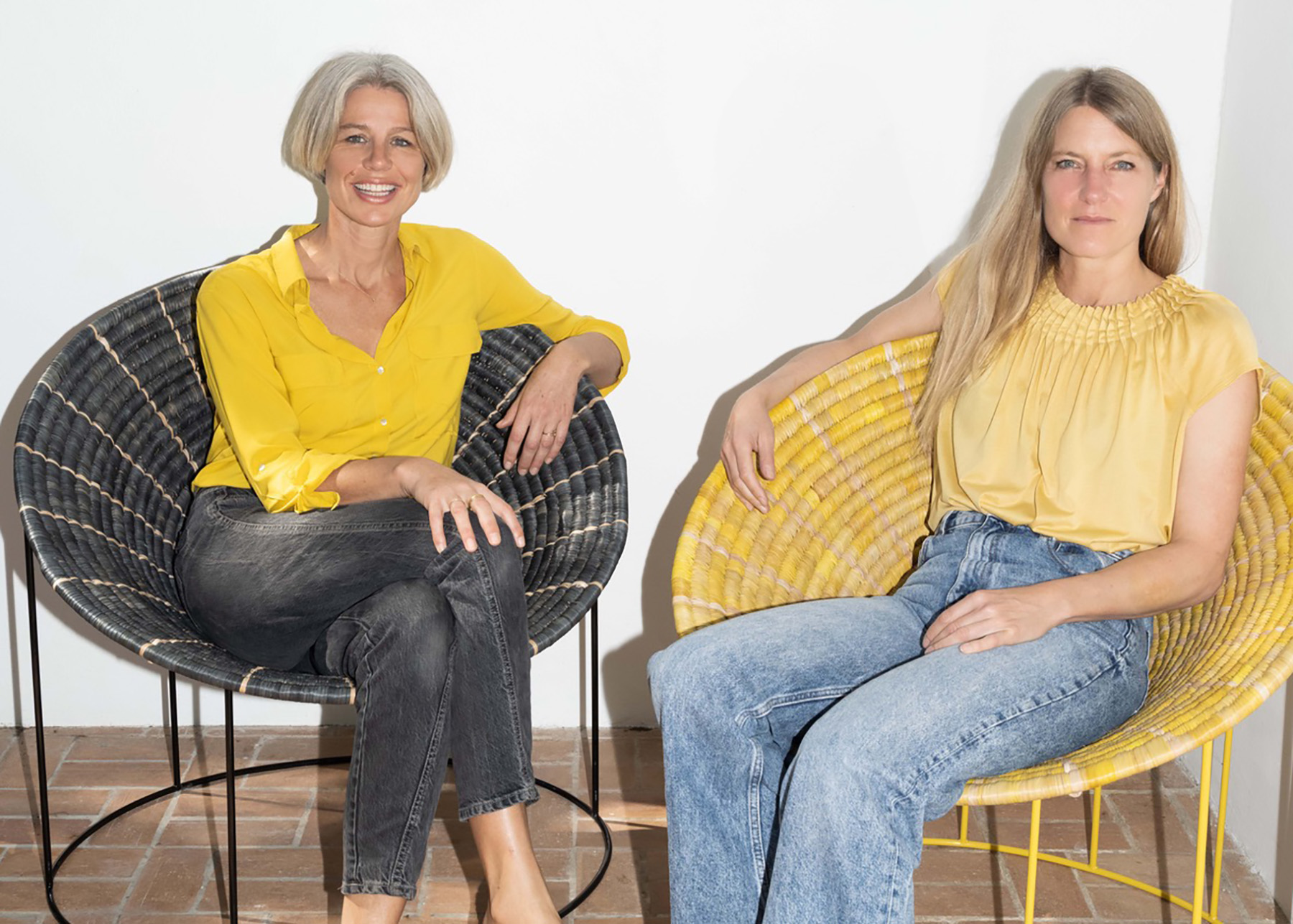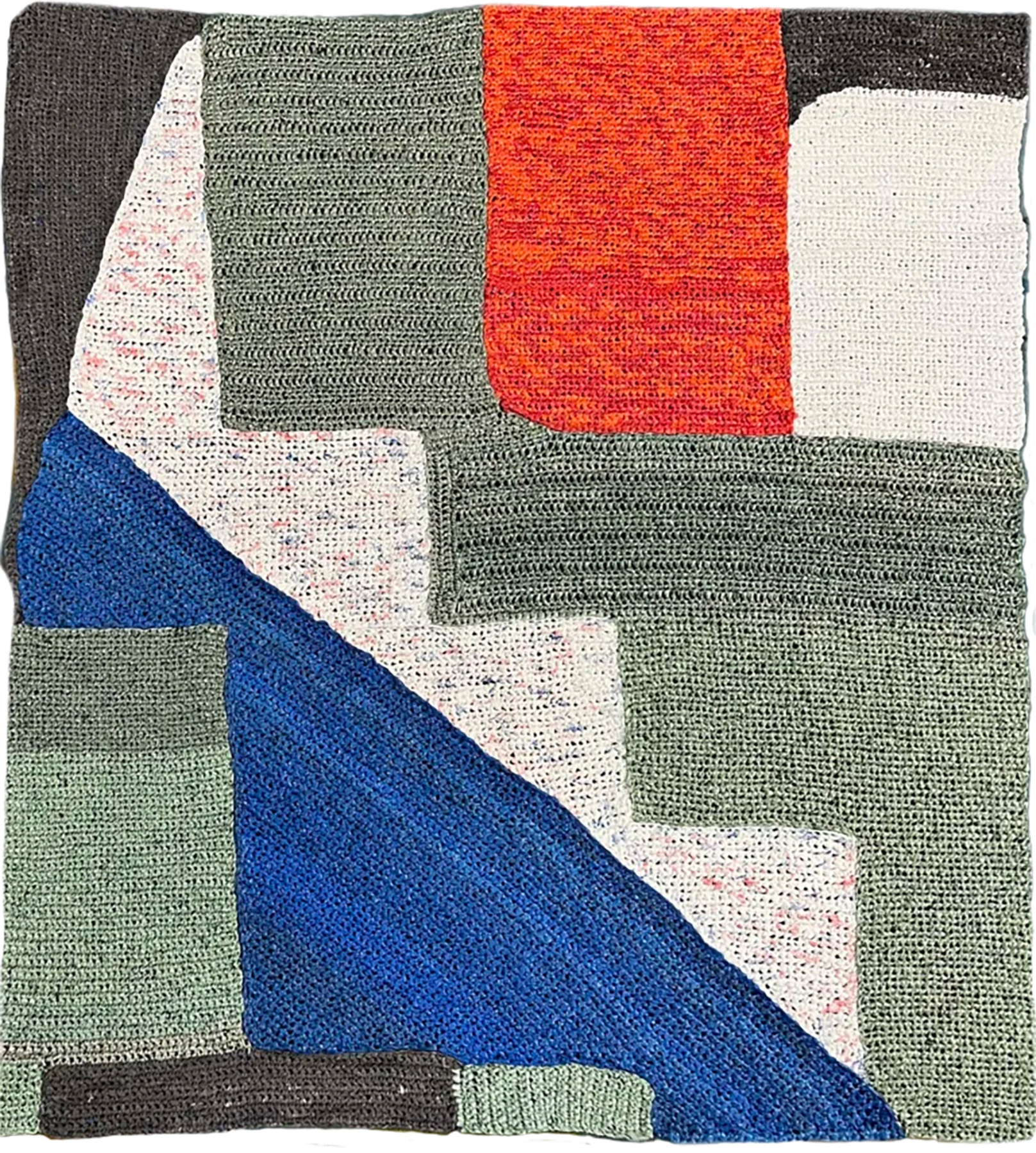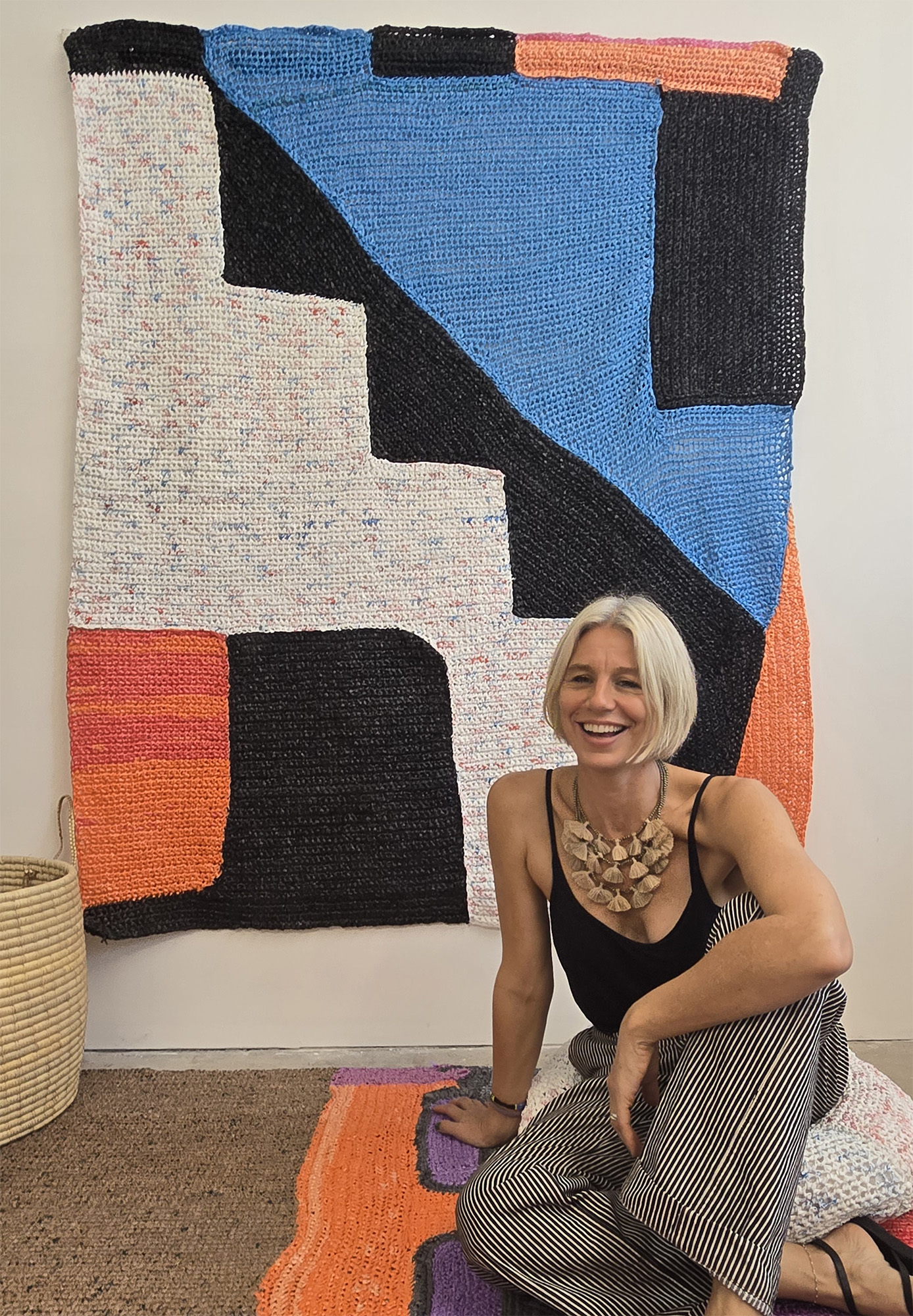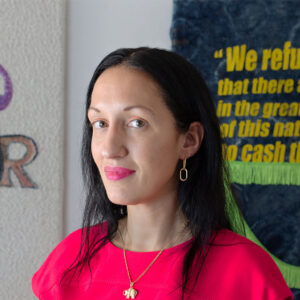
When Waste Becomes Language, Design Starts to Speak
Hettler.Tüllmann Studio explores how design can build community by reimagining everyday materials. After learning about Helping Hands, an arts and crafts program organized by the Miami-Dade Public Library System’s Country Walk Branch, where volunteers crochet ground mats from recycled plastic to support people experiencing homelessness, the two artists were deeply moved by the project’s purpose. Seeing how a humble act of making could embody care and sustainability, they invited Helping Hands to collaborate on a new creative endeavor.
At the heart of Helping Hands is a practice of compassion and renewal. Everyday shopping bags from neighborhood stores are cut into strips and spun into a soft, durable yarn called plarn. Participants gather at the library to crochet this transformed material into ground mats that provide comfort and dignity to those in need. Each mat becomes proof that small, shared gestures can bridge isolation and turn what was once disposable into something of enduring use and meaning.
The colors of these plastic bags, often bright blues, reds, greens, grays, whites, and translucent tones, are more than incidental. Many grocery bags are tinted using inexpensive synthetic dyes derived from petroleum-based pigments. While the colors serve marketing and brand recognition, they also reveal the unseen chemical afterlife of our consumer habits. Darker hues often require more pigment and can release greater amounts of microplastic and toxic compounds as they degrade, while lighter or natural tones tend to carry less environmental impact. In the hands of Helping Hands participants, these colors are given new life and purpose, no longer coded by commerce but redefined as expressions of care and community.
Hettler.Tüllmann then commissioned Helping Hands to create a series of Miami Map wall hangings using the same upcycled technique. The crocheted maps trace the aerial outlines of neighborhoods such as Golden Beach, Bay Harbor, Hialeah Gardens, and Surfside. These areas reveal both contrast and connection across Miami’s social and environmental landscape. Viewed from above, each piece takes on a minimal, intuitive, and abstract form, echoing the geography of place and the shared resilience it represents. In their surface tension and rhythmic linework, the works recall the painterly abstraction of early modernists who translated landscape into feeling, from Paul Klee’s poetic cartographies to Anni Albers’ woven geometries. Here, the distinction between art and craft dissolves into a contemporary dialogue about material, meaning, and place. What began as community craft emerges as a legitimate art form that celebrates suggestion, gesture, and care.

A Practice of Trust, Restraint, and Renewal
Their ongoing work with community groups extends beyond Miami. In 2023, Hettler.Tüllmann co-curated The Alchemy of Re.Use with Shaker Museum in Kinderhook, New York, where they are part of the museum’s Makers’ Circle, an advisory group of contemporary designers innovating within the field of craft and sustainability. The duo received a grant from the museum for this collaboration, continuing their engagement with the Shaker ethos of reuse and resourcefulness. The exhibition reflected the Shaker legacy of making with integrity and restraint, aligning perfectly with the studio’s ethos of turning everyday materials and communal labor into refined works of art.
Hettler.Tüllmann Studio was founded in 2005 by Berlin-based designer Katja Hettler and Miami-based architect Jula Tüllmann. The duo’s interdisciplinary approach emphasizes sustainable materials and traditional craftsmanship, celebrating the handmade while bridging past and future calls to engage. They begin each day working remotely between Berlin and Miami, sharing ideas, sketches, and material samples before convening in Berlin in their production studio to refine prototypes and final works. This rhythm of dialogue and distance allows their practice to stay both local and global, grounded in collaboration and curiosity.

Sustainability. It’s a Conversation that Never Ends
Separately, Tüllmann maintains a solo studio at Collective 62 in Miami, a collaborative environment for women artists and designers whose practices span art, design, and craft. Her studio there reflects her personal commitment to community and the simplicity of the handmade. As a duo, Hettler.Tüllmann have worked with craftspeople and artisans from Ethiopia and Malawi to Afghanistan and Japan, extending their community-minded practice beyond borders while remaining rooted in local engagement.
The continuous rhythm of crochet links neighborhoods that rarely meet and uplifts an underserved, diverse population. Profoundly relevant, the duo exercises compassion toward climate justice and our shifting cultural attitudes about care and repair. Represented by Mindy Solomon Gallery, Hettler.Tüllmann will once again show with the gallery at Design Miami, December 2 to 7, 2025, in its purpose-built pavilion beside the Miami Beach Convention Center.
In response to Mindy Solomon Gallery’s theme Colors of the Dawn, the duo is working out of their comfort zone to present new furniture pieces that continue their dialogue between material and meaning. Their presentation will include coffee tables utilizing organic marcella, a 100% organic cotton recognized for its raised parallel cords and geometric weave, and two rope chairs crafted with organically dyed, three-ply recycled cotton string sourced from Hialeah, Miami, one of which is an elliptical rocking chair. For Hettler.Tüllmann, material is always the point of departure. The project embodies their ongoing pursuit of sustainability through tactility and design, inviting viewers to see how the physical and the poetic can coexist within the same object.
The presentation continues their shared commitment to sustainable design and material innovation, expanding the conversation between craft, ecology, and community. It is a fitting stage for artists whose practice reaffirms that weaving, crocheting, and making by hand embody a universal language of care and repair across materials, cultures, and environments.
At Green Religion, we are drawn to projects like this, where the broader topic of climate justice is woven into everyday life. Through their work with Helping Hands, Hettler.Tüllmann amplify the transformation of discarded plastic into symbols of connection and care. Together, they reveal how empathy, design, and environmental awareness come together through creative making.

Explore the growing space of Green Religion where stories connect us, creativity leads to awareness, and climate justice remains at the core.
We value your privacy. Your email address and personal information will be used solely for sending updates from Green Religion. We do not share your information with outside parties, and you can unsubscribe at any time.